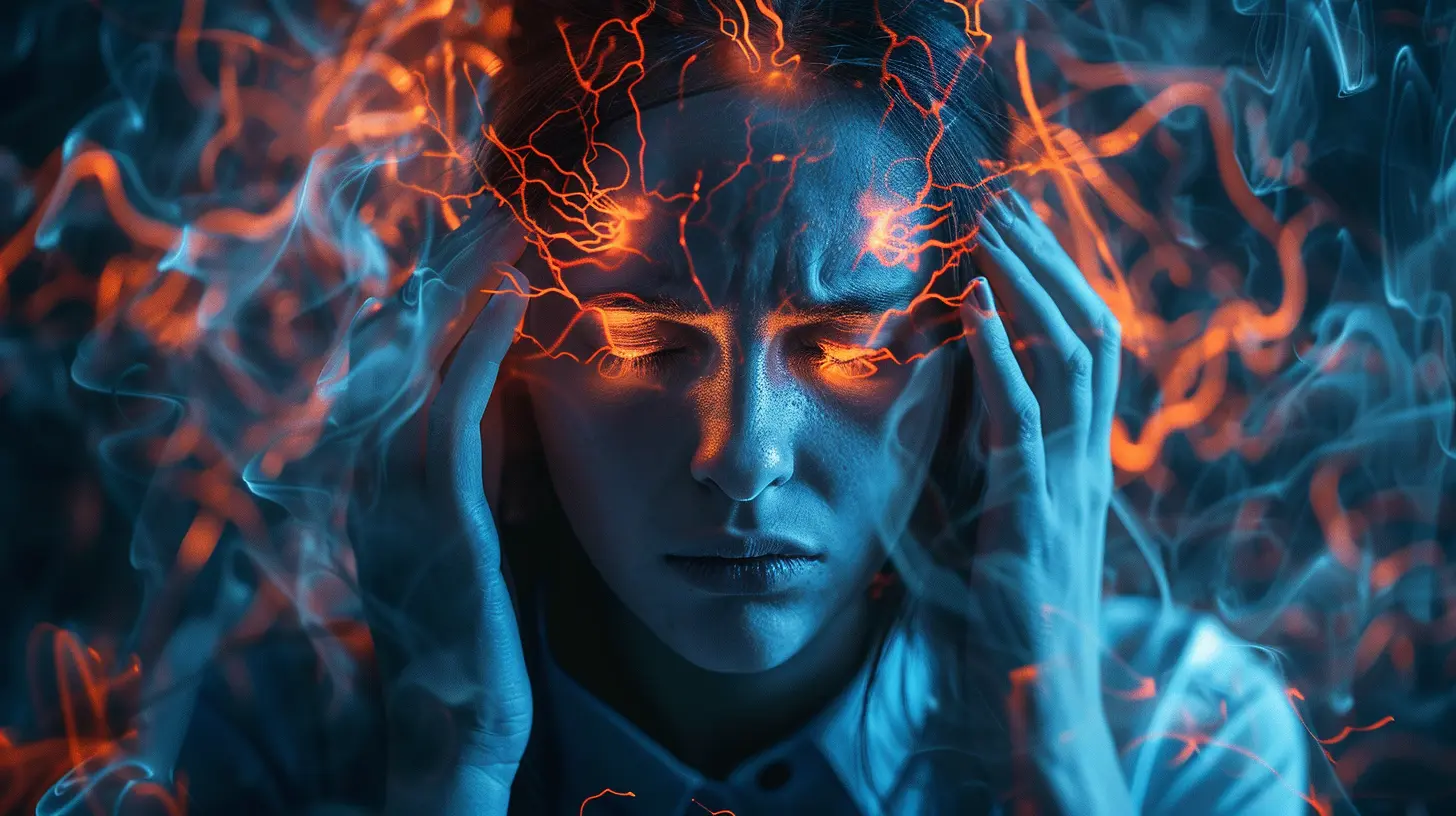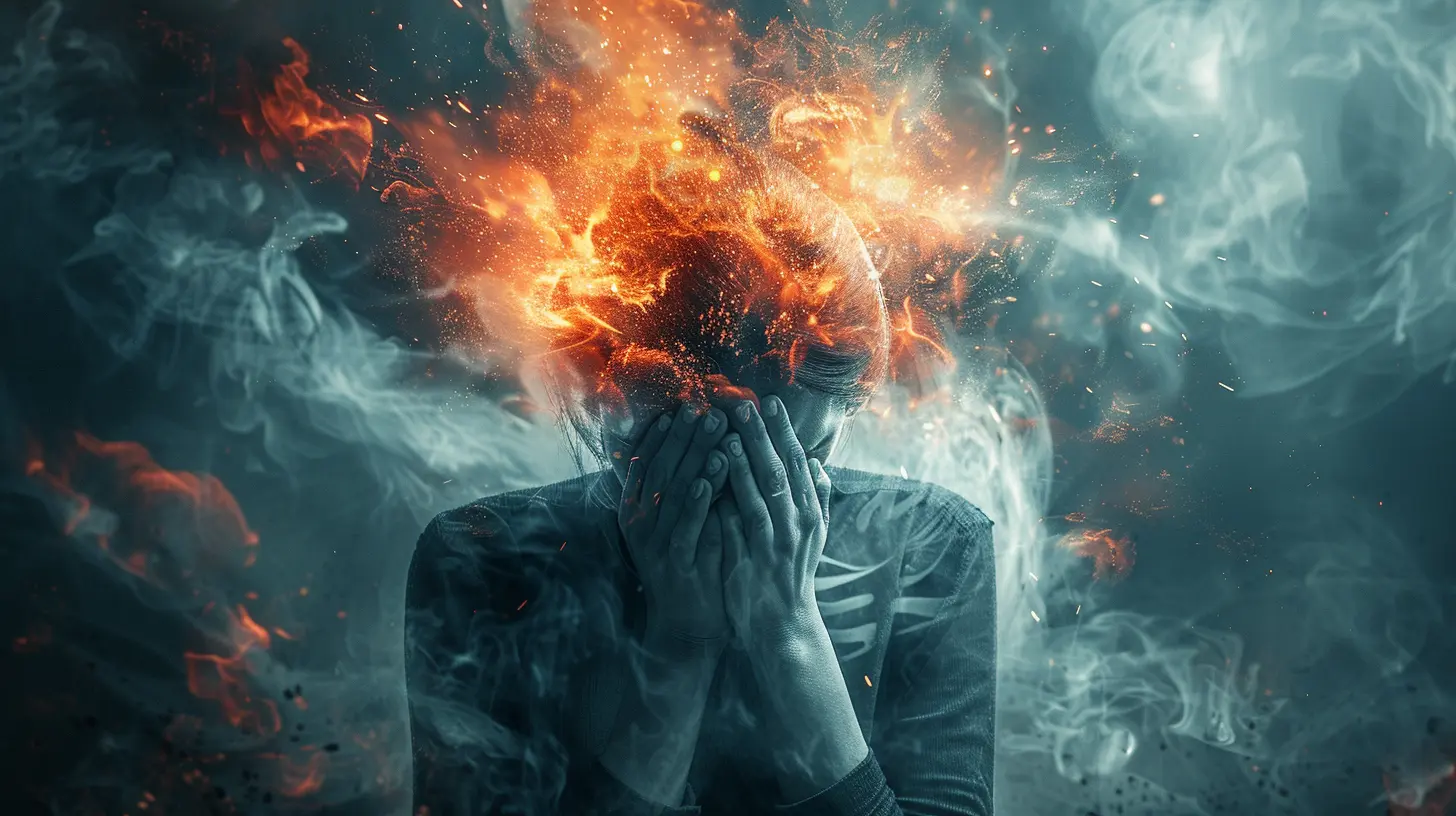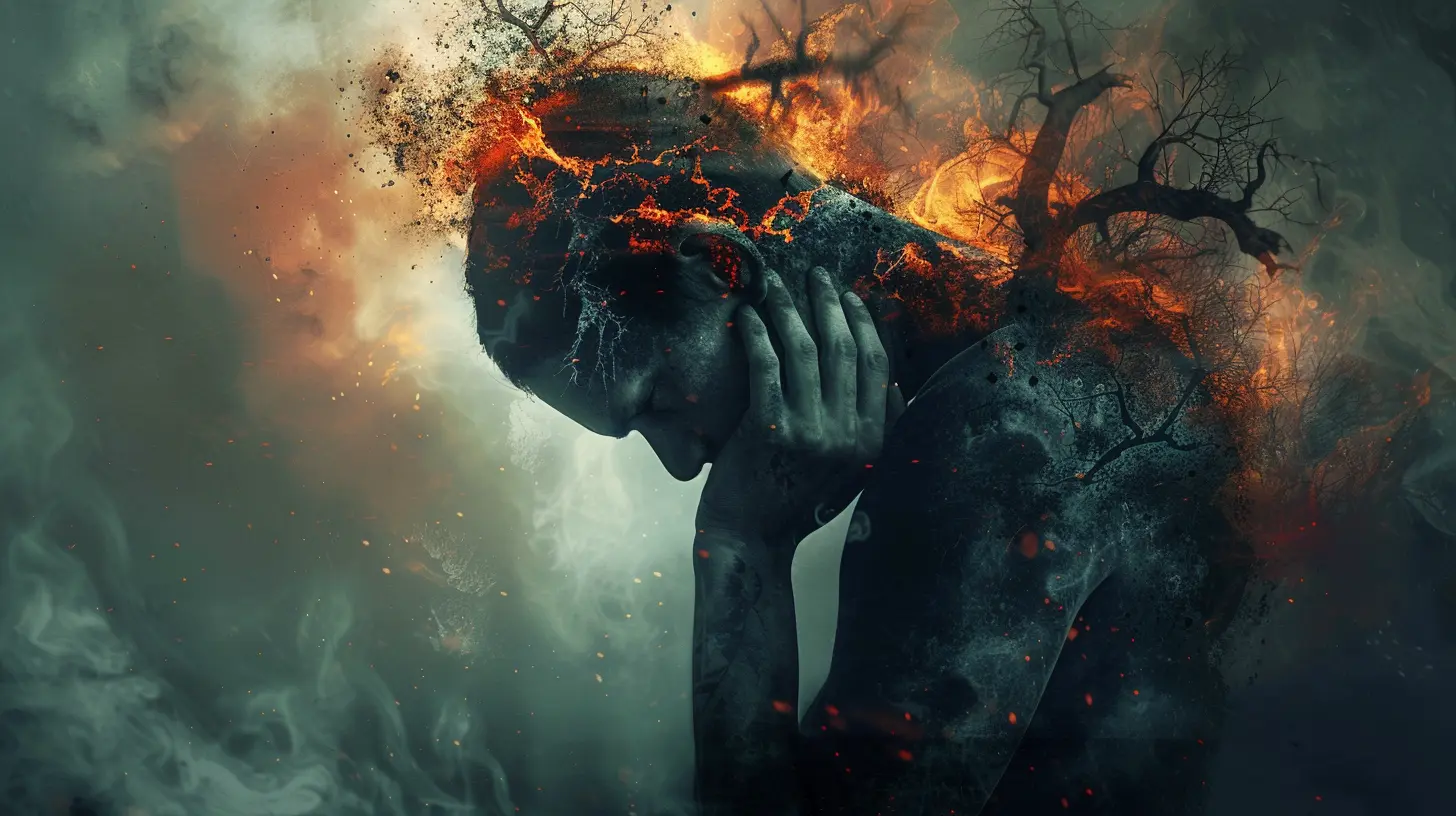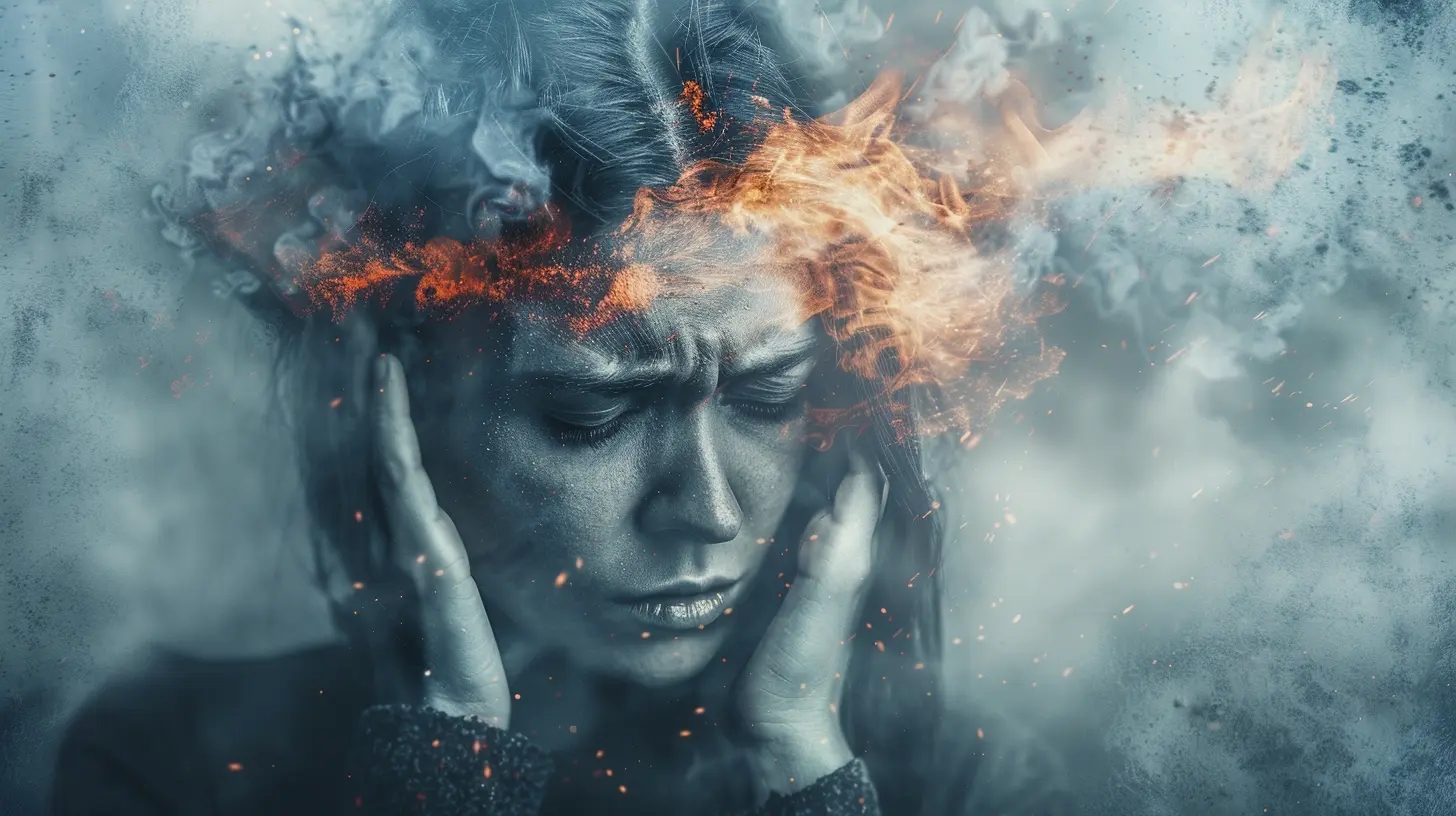The Neuroscience Behind Panic Attacks
19 October 2025
Picture this: You're standing in line at your favorite coffee shop, minding your own business, fantasizing about that sweet, sweet vanilla latte—and BAM! Your heart starts racing, your chest feels tight, your vision blurs, and it’s like your brain just hit the panic button… hard. Sound familiar? Welcome to the chaotic, confusing, and slightly dramatic world of panic attacks.
But what's really going on behind the scenes? Why does your brain decide to throw you into fight-or-flight mode when you're just trying to order a muffin? Buckle up, because we're diving deep (but not too deep—nobody's got time for a neuroscience textbook) into the fascinating science of what causes a panic attack. And don't worry, we're keeping things light, witty, and, dare I say, panic-free.

What the Heck Is a Panic Attack, Anyway?
Let’s start with the basics. A panic attack is essentially your body's alarm system going haywire. It's like your brain's yelling "FIRE!" when someone just lit a scented candle. It’s sudden, intense, and often shows up uninvited—like that one cousin who always crashes your BBQ.Symptoms usually include:
- A racing heart
- Sweating
- Trembling
- Shortness of breath
- Chest pain
- Nausea
- Dizziness
- A sense of impending doom (yes, your brain can be that dramatic)
Sounds super fun, right?
But what's really happening in the brain when this all goes down? Let's get nerdy with it.

Meet the Brain: Your Emotions’ Overly Dramatic Roommate
We’ve all got that one friend who overreacts to everything. In your brain, that drama queen is the amygdala. This tiny almond-shaped region is your HQ for emotions, especially fear. It’s the one who screams “RUN!” when you spot a spider or hear a suspicious noise at 3 a.m.The Amygdala: Fear’s Personal Assistant
The amygdala’s job is simple: keep you safe. It takes in sensory information and decides if you’re in danger. Sometimes it’s right (like when there’s an actual fire). Other times, it’s wrong (like when it's just your cat knocking over a lamp). Unfortunately, during a panic attack, it totally misfires and sets off a false alarm.When the amygdala jumps the gun, it triggers the hypothalamus, which sounds even scarier than it is. This part of your brain kicks off the fight-or-flight response—your body’s all-in survival mode.
Enter: The HPA Axis
No, the HPA axis isn’t a new luxury airline. It stands for Hypothalamic-Pituitary-Adrenal axis—a fancy term for the hormone highway that helps your body freak out effectively.When activated, the HPA axis floods your system with stress hormones like cortisol and adrenaline. Your heart races, your muscles tense, and your breath shortens. Basically, your body preps for an emergency that doesn’t actually exist. Oops.

Panic Attacks and Brain Chemistry: A Love-Hate Relationship
If you’ve ever blamed your mood on “chemicals,” you’re not wrong. Your brain is basically a squishy cocktail of neurotransmitters, like serotonin, dopamine, and GABA. These brain chemicals help regulate your emotions.Low on GABA? Get Ready to Freak Out
In people prone to panic attacks, the GABA system may be underperforming. GABA’s main job is to chill things out—it’s like the brain’s internal spa therapist. When GABA levels are low, the brain can’t calm itself effectively, which means your stress response can spiral out of control like a toddler on a sugar high.Norepinephrine: The Drama Hormone
Meanwhile, norepinephrine (a cousin of adrenaline) increases alertness and attention. Great during an actual emergency, but when it’s overactive for no good reason, it can fuel a panic attack like throwing gasoline on a bonfire.
Wait, Is This in My Genes?
This just in: panic attacks can run in the family. If your mom, uncle, or grandma starts hyperventilating at the sight of public speaking, you might have inherited a touch of that panic-prone wiring.Nature vs. Nurture
While genes can play a role, they aren’t the whole story. Environmental factors—like traumatic experiences, chronic stress, or growing up in a household that treated stress like a sport—can also wire your brain toward panic. It’s like your brain learned to expect disaster, even if nothing’s wrong.The Prefrontal Cortex: The (Often Ignored) Voice of Reason
Ah, the prefrontal cortex—your brain’s CEO. This part handles rational thought and decision-making. Unfortunately, during a panic attack, it gets totally ignored. The amygdala basically yells over it like a toddler having a tantrum in Target.So even though the prefrontal cortex is whispering, “Hey, we’re just in a grocery store, not in mortal danger,” your amygdala's already triggered full-blown DEFCON 1.
The Vagus Nerve: Your Chill Button
If all this brain chaos sounds overwhelming, don’t worry—your body has a built-in calm-down mechanism called the vagus nerve. This lovely little nerve helps regulate your parasympathetic nervous system (aka: rest and digest mode).Activating your vagus nerve through things like deep breathing, cold exposure, or humming (yep, humming!) can shift you from panic to peace. It’s like your body’s own emergency brake.
Modern Life: A Panic Attack Playground
Even though most of us aren’t facing lions in the wild anymore, our brains still act like we are. Modern stressors—deadlines, bills, social media-induced FOMO—can overload us and prime the brain for panic.Too Many Notifications, Not Enough Nature
Let’s be real: our brains weren’t designed to juggle texts, emails, TikTok, and a 9-to-5. Constant stimulation can wear down our coping systems, making it more likely the amygdala will flip out over minor stuff.
How the Brain Remembers Panic
One of the cruelest things about panic attacks? Once you’ve had one, your brain basically bookmarks that experience like “Let’s not forget this terrifying moment, cool?”The hippocampus, your brain’s memory bank, links that episode with certain places or sensations. That’s why you might feel panicky every time you go near a place where a previous attack happened—your brain’s trying (unhelpfully) to protect you.
But Why Do They Happen “Out of Nowhere”?
Great question! Sometimes, panic attacks seem to appear out of thin air. No scary dog, no traumatic memory, no monster under the bed. So what gives?Well, subtle changes in your body—like a faster heartbeat after caffeine or a skipped meal—can signal to your brain that something’s off. If your amygdala’s already in detective mode, it might interpret those harmless sensations as “danger ahead!” and press the panic button.
It’s the classic case of jumping to conclusions... but with hormones.
Can You Rewire Your Brain?
Absolutely. Your brain is a champ at something called neuroplasticity, which is a fancy way of saying it can learn and change—even after years of panic patterns.Cognitive Behavioral Therapy (CBT): Mind Gym for Your Brain
CBT helps you recognize and challenge the thoughts that trigger your panic. Basically, it teaches you to train your inner narrator to stop yelling, “WE’RE ALL GONNA DIE!” over a stubbed toe.Medication: Chemical Backup
For some folks, medication like SSRIs help rebalance those tricky neurotransmitters. It's like giving your brain a chemical pep talk.Mindfulness & Meditation: Chill Vibes Only
Practices like mindfulness and meditation strengthen the prefrontal cortex and calm the amygdala. Think of it as emotional yoga—flexibility, balance, and lots of breathing.Final Thoughts: Your Brain Means Well (Even When It Freaks Out)
Look, your brain isn’t out to get you. It’s doing its best with the (sometimes faulty) wiring it’s got. Panic attacks are your body’s over-zealous attempt to keep you safe. The good news? With the right tools, you can turn down the volume on that internal alarm system.So next time your brain starts shouting “MAYDAY!” over a crowded elevator or a stressful email, take a deep breath, thank your amygdala for trying, and remind yourself: there’s no fire. Just coffee jitters and a bit of extra adrenaline.
And hey, that latte? Totally worth the battle.
all images in this post were generated using AI tools
Category:
Psychological DisordersAuthor:

Ember Forbes
Discussion
rate this article
1 comments
Dakota Cain
Great insights! Understanding panic attacks helps foster compassion.
October 29, 2025 at 6:04 AM

Ember Forbes
Thank you! I'm glad you found it insightful. Understanding these experiences can truly enhance empathy and support for those affected.


